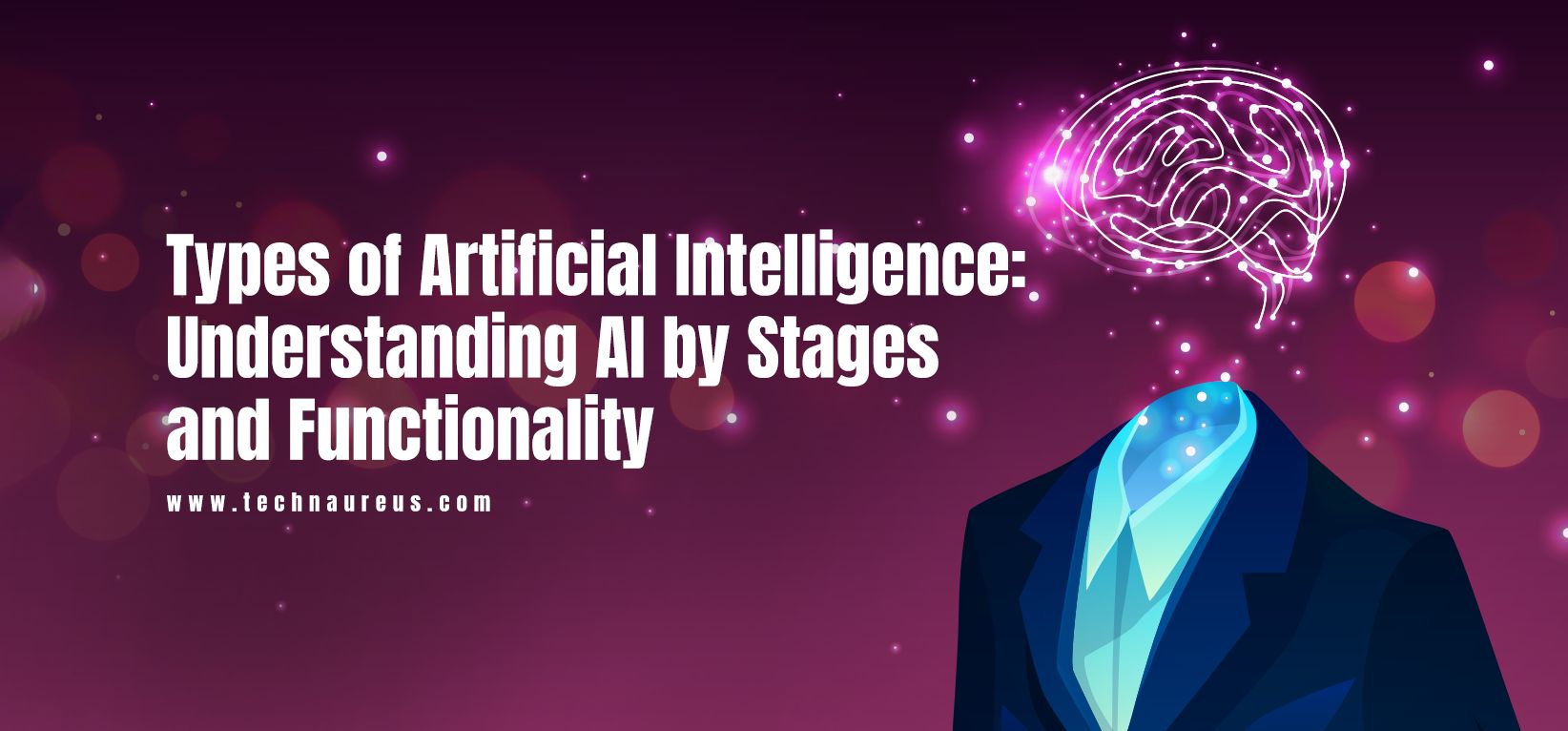Sanal Kumar NJune 3, 2025
Artificial Intelligence (AI) is transforming industries and reshaping everyday life, from virtual assistants to autonomous vehicles. But not all AI is created equal. To understand the scope and limitations of this technology, it's essential to explore the types of Artificial Intelligence, categorized by both developmental stages and functional capabilities. This comprehensive guide breaks down the classifications of AI, detailing their characteristics, real-world applications, and future potential.
Artificial Intelligence systems are typically grouped into three primary stages based on their level of sophistication and autonomy. These stages help explain the evolution of AI from simple automation to future hypotheticals.
Narrow AI, also known as Weak AI, is designed to perform a single task or a narrow set of functions. It dominates the AI landscape today.
Takeaway: Narrow AI powers most AI applications we use today. It's fast, efficient, and reliable—but only within its domain.
General AI refers to systems capable of performing any intellectual task a human can. AGI aims to replicate human reasoning, learning, and decision-making.
Insight: AGI is a major goal of AI research, with organizations like xAI and OpenAI exploring its safe development.
Superintelligent AI refers to AI that exceeds human intelligence across all aspects—logic, creativity, decision-making, and emotional intelligence.
Caution: Superintelligent AI is speculative but sparks deep debates around future safety and control.
Beyond its development stages, AI can also be classified by how it functions—from simple reactionary models to the imagined possibility of conscious machines. These categories help define how AI interacts with the world and processes information.
Reactive AI operates without memory or past context. These systems respond to current inputs using predefined rules or data structures.
Use case: Best for static environments where rules never change.
Limited Memory AI systems can use past data to make decisions. This enables more intelligent and adaptive behavior than purely reactive systems.
Current status: Most modern AI systems (e.g., ChatGPT, Tesla Autopilot) fall into this category.
Theory of Mind AI is still theoretical, but it refers to systems that understand human emotions, intentions, and social cues.
Future goal: Building AI that genuinely "understands" humans, not just simulates them.
Self-Aware AI represents the final frontier—an AI that has consciousness, self-awareness, and the ability to reflect.
Note: No evidence suggests this is technically possible in the foreseeable future—but it's a subject of ongoing debate.
Today, Narrow AI powers applications across healthcare, finance, logistics, education, and more. Meanwhile, Limited Memory AI dominates functional applications like predictive analytics and autonomous systems.
General AI and beyond remain aspirational, raising both hope and concern. As machine learning advances, the lines between these AI types may blur. Startups and research groups—such as OpenAI, DeepMind, and xAI—are actively pursuing these frontiers with a focus on safety, ethics, and transparency.
Key Insight: The future of AI depends not just on what we can build—but on how responsibly we do it.
Understanding the types of Artificial Intelligence by both developmental stages (Narrow, General, Superintelligent) and functionality (Reactive, Limited Memory, Theory of Mind, Self-Aware) helps frame where we are—and where we’re headed.
While Narrow AI is already reshaping our world, the emergence of more advanced forms will require not only innovation but also deep ethical reflection. With thoughtful development, AI has the potential to solve some of humanity’s greatest challenges.
AI is classified by stages (Narrow, General, Superintelligent) and by functionality (Reactive, Limited Memory, Theory of Mind, Self-Aware).
No, AGI is still theoretical. Current AI systems are Narrow AI with limited capabilities.
Reactive AI responds to present stimuli without memory, while Limited Memory AI uses past data to improve decisions.
Self-aware AI is purely speculative. There are no systems today with consciousness or introspection.
Understanding these classifications helps businesses, developers, and policymakers evaluate capabilities, risks, and opportunities in AI adoption.

1